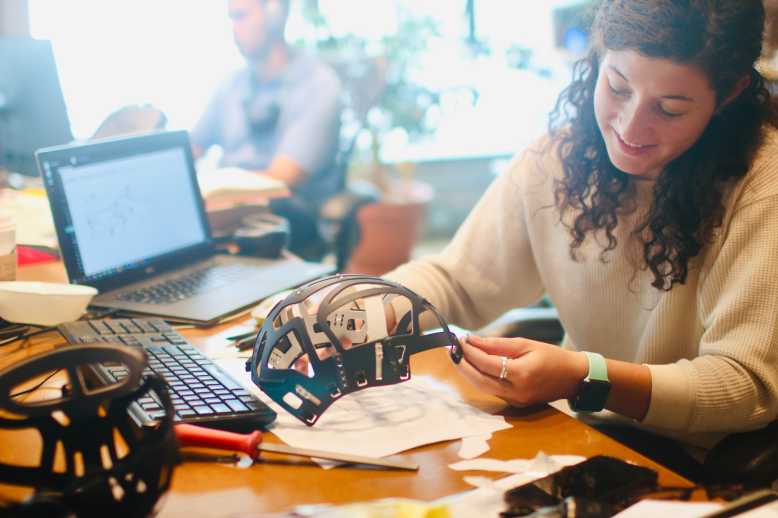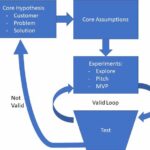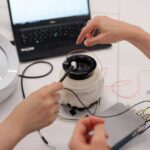I have mentored thousands of clients over the years, and one of the most common issues I see when someone is starting a new venture is that they start with a solution and then try to find a market for it. One of my first requests to a new client with a new business idea is to ask them to share the evidence they have collected to support their customer and problem hypotheses. When a new venture fails to conduct a formal customer discovery process, they are practicing what is called “faith-based entrepreneurship.” In these cases, I try to recommend they practice “evidence-based entrepreneurship” instead.
What is Evidence-Based Entrepreneurship?
What is evidence-based entrepreneurship? Evidence-based entrepreneurship uses the concepts of the lean startup process to get evidence-based early validation of a product or service by conducting an in-depth customer discovery process before designing a solution.
However, what I often discover is that many small business founders are so convinced that customers will love their offering that they feel it is unnecessary to conduct any kind of market research. As a result, they dive headlong into developing their solution, organizing their supply chain, and developing marketing content and channels before they actually get feedback from prospective customers that provides evidence that the customer segment will embrace the solution.
Start With a Business Model Canvas
I always recommend that founders begin their new venture by developing a business model canvas to describe the value proposition, infrastructure, customers, and finances of their solution. Unfortunately, once the business model canvas is developed, including how the business model canvas will align with environmental forces, I tell them they are still not done. As valuable as developing a business model canvas is, one of the missing pieces that is often overlooked is customer development, which is a key part of the lean startup methodology. The data a new business collects during the customer discovery process is required to update the original hypotheses and assumptions used to create the initial version of the business model canvas.
It is important to understand that although the lean startup concept was originally conceived as a way to help a product-based startup, often working out of a garage when it was introduced, it has proved to be equally applicable in large existing corporations as well as a small microenterprise.
Faith-Based Entrepreneurship

In the old days, the founder would write a business plan based on a bunch of assumptions and use the plan to raise money. Once they raised the necessary capital, they would use the money to develop a product or a service to take to market. Very often, the solution developed did not meet expectations. At that point, the business would either go out of business or try to raise additional capital so it could pivot to a new solution based on market feedback. This process may go on a few times before the business either becomes successful or goes bankrupt in the process.
The old approach was a colossal waste of time and resources because the new venture failed to do sufficient customer development upfront and was given the name faith-based entrepreneurship to differentiate it from evidence-based entrepreneurship. Validating your hypotheses and assumptions up front prevents most of the problems encountered with faith-based entrepreneurship.
Why You Need Customer Development
I tell my clients that before they embark on developing any type of solution, they need to conduct hypotheses and assumptions testing by running experiments. I stress that evidence-based entrepreneurship means leaving the comfort and anonymity of the office and going out to talk to potential customers. Running an online survey or making a phone call is not good enough to get honest feedback. I encourage my clients to actually go out in public and ask a series of discovery questions to the customer segment identified in their initial business model canvas to really understand what they do and don’t do and what they experience every day.
Every new venture needs to prove its vision is viable before they develop any type of solution. However, many new business owners begin with a fundamental flaw in their thinking by observing how other more mature businesses operate. They believe that a new venture is just a smaller version of a big company. This leads the founder to believe that in order to succeed, it is sufficient to follow the same strategies as those employed by bigger companies.
However, that is never the case because, as a new business, you are still searching for your business and economic model while existing companies are executing a proven business and economic model with a new offering. Unlike large established businesses, your new business can’t simply introduce a new product to the market. Existing companies already have a loyal customer base. The business has conducted extensive research on customer demographics and preferences. They have also done their homework when it comes to their competitors and how to best price their offering. These existing businesses apply all that knowledge when it comes to their product development process. While from the outside, it may appear that a business can focus on product development, this only applies to existing businesses that already have a successful business and economic model and loyal customers.
By comparison, your new business is too young to know much about the market environment you are entering. Before you develop a solution, you need to get to know more about your customer base first. All new businesses need to begin with a customer development process. The goal of the customer development process is to really understand your customers’ jobs and friction points before you go through the effort of designing a marketable solution.
Evidence-Based Entrepreneurship Conclusion
Many new business founders mistakenly believe that their startup is just a miniature version of a big company. Operating on this belief can be deadly for startups because larger established companies have had years to build their strategies, acquire customer feedback and research their competitors. As a new business, you’re just starting out, and that means you still need to figure out who your target market is and what your strategy will be to get them to buy from you.
Your new business will make mistakes along its journey, as every new venture does. However, you can make the most of your errors by catching them early and treating them as learning opportunities.
You can reduce mistakes and their impact by gathering as much feedback as possible from your potential customers well before you invest in developing a final solution. Remember, your primary goal in evidence-based entrepreneurship is to find out if there is a market for your offering. Conducting research early on is vital because if you realize that the market isn’t out there, you’ve just saved yourself a lot of time and money. It is, after all, best to avoid developing a solution nobody wants. Sometimes, your solution is just ahead of its time.
However, if you find that you do have a market for your product or service, you can use this feedback to tweak your product to better meet your customers’ needs. Customer discovery is not about selling anything. You are simply trying to gather as much information as possible so that you can optimize your solution for maximum profit.
Does your new venture embrace evidence-based entrepreneurship, or is it faith-based?
Be sure to check back next week as we go into more detail about the four steps of a customer development process.












